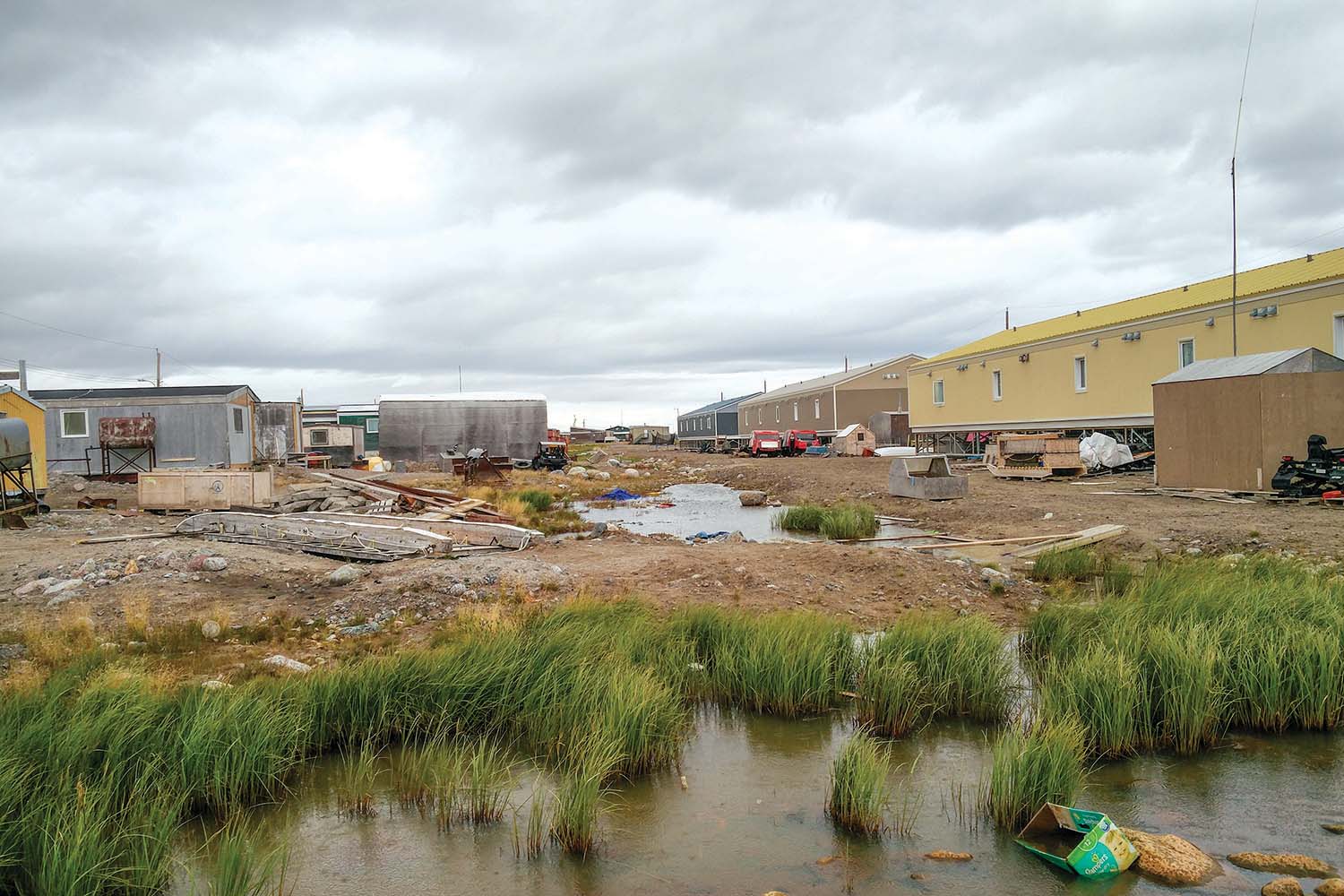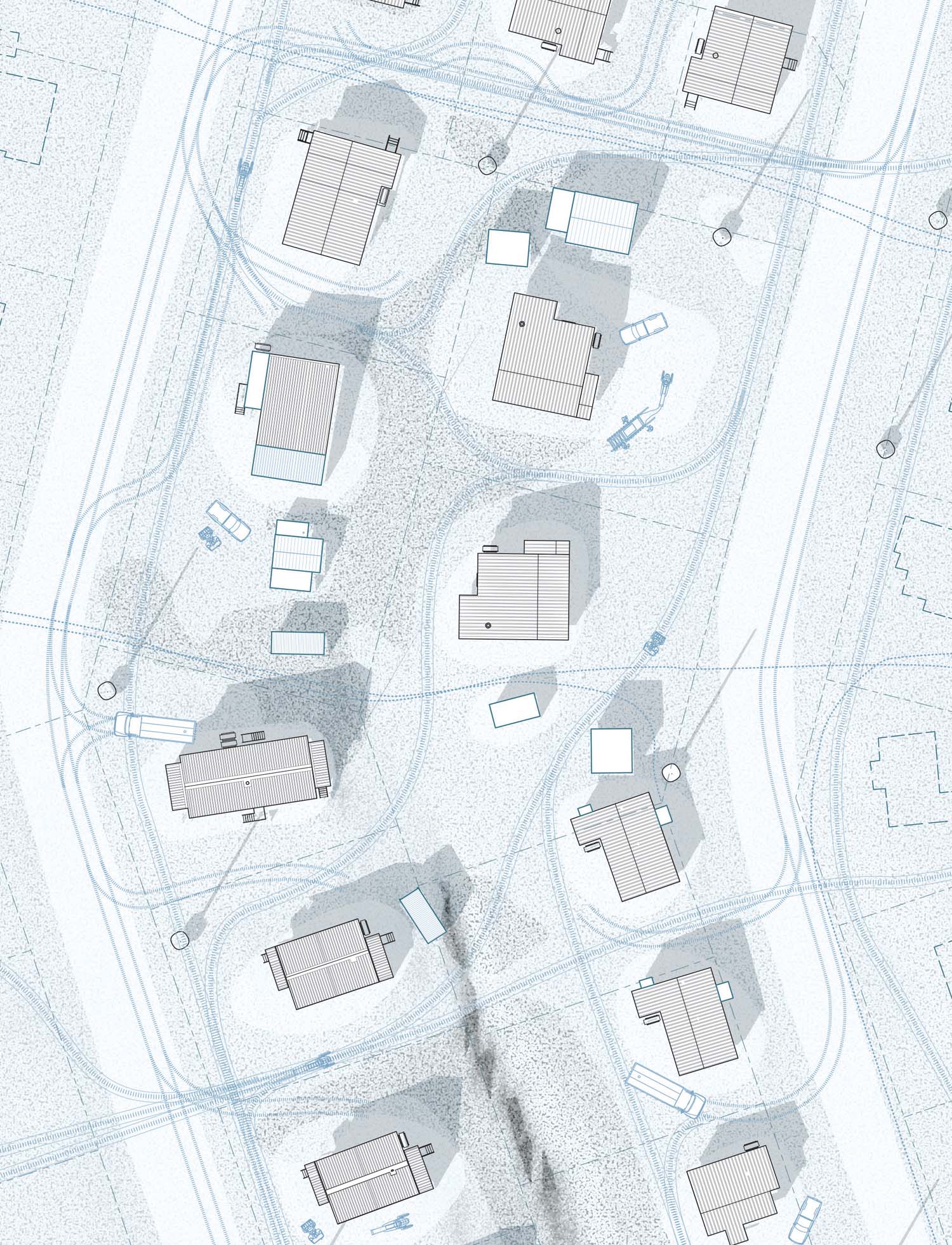Unsettling Ground
Jason McMillan, University of Waterloo
WINNER OF A 2020 CANADIAN ARCHITECT STUDENT AWARD OF EXCELLENCE
“This was a very interesting study of what’s going to happen with the thawing permafrost in Arviat, and the architecture of a new type of collective living that could form on this unsettled ground. It evidences interesting research on the location’s housing crisis, environmental crisis, and cultural crisis, including visiting the site multiple times throughout the year.” – Susan Fitzgerald, juror

Ground in the Canadian Arctic is continuously shaped by dramatic seasonal cycles, extreme weather, and deep geological processes of glaciation and retreat. In the past, remote communities in the Inuit homeland of Nunavut coped with this geological instability through traditional knowledge of climate and territory. Then the North was aggressively transformed by systematic federal government interventions, including forced relocations of Inuit. Canadian visions of modernism imposed new patterns of settlement and spaces at odds with the fluidity of the land. Many current Arctic communities have outlasted the mines, trading posts, and military installations that dictated their location. And now the warming trends of climate change are increasingly destabilizing the frozen soils, or permafrost, on which these communities are constructed.

Local building practices in Arviat, Nunavut were the catalyst for this thesis project. Its author, Jason McMillan, made two research trips to the community and observed how its residents were engaging in collective projects that challenge the neutralized mapping, master planning and housing conventions that were imposed on Arviat. Stories and geological observations shared by community members inform the three design strategies that McMillan puts forth as more flexible and adaptable alternatives to current planning and design practices of the Nunavut Housing Corporation.

The first tactic, Fluid Geology, proposes block-and-wedge foundations surmounted by decks as a means of introducing a “layer of flexibility” between existing structures and thawing permafrost. McMillan also advocates planning that responds to hydrological features instead of conforming to a strict grid. The second tactic, Collective Ground, reconsiders buildings as a means of forming collective spaces, both indoors and out. The third, Lived Boundaries, explores how traditional relationships cross the physical boundaries designed into the town, connecting open space, structures and landscape by social and seasonal rhythms.

McMillan returned from Arviat convinced that much could be learned from the “informal and often messy collective projects” undertaken by the community to adapt the built environment they have to the unsettled ground beneath it. These projects offer great lessons, he observes, to “designers seeking to unsettle their own practices.”
Advisor: Lola Sheppard
